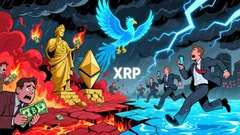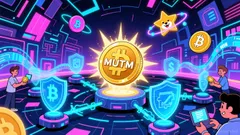AInvest Newsletter
Daily stocks & crypto headlines, free to your inbox
Ethereum, the world's second-largest blockchain, is facing a critical challenge: fragmentation. Over the past four years, the network has expanded its transaction processing capacity and reduced costs through Layer-2 (L2) solutions and rollups. However, this success has led to an unexpected problem: the proliferation of over 50 L2s, creating a maze of isolated chains that users must navigate. This fragmentation has led to a poor user experience, with users struggling to manage multiple networks, bridge assets, and execute complex processes for simple actions.
The cost of fragmentation is significant. Users face the burden of managing multiple networks and executing intricate processes, while liquidity becomes trapped in silos, reducing market efficiency and increasing costs for all participants. Developers also face challenges in choosing which L2s to support, managing multiple deployments, and building complex bridging infrastructure. This stifles innovation and raises barriers to entry for new projects.
To address this issue, Across and Uniswap Labs have proposed ERC-7683, a standard that allows Web3 apps to express complex multi-step cross-chain transactions as a single user request. This standard enables any cross-chain action in the Ethereum ecosystem to feel as seamless as operating on a single chain. ERC-7683 has undergone multiple rounds of community feedback and is broadly supported by over 50 protocols, including major projects like Arbitrum, Base, and Optimism, as well as the Ethereum Foundation's L2 Interop working group.
ERC-7683 simplifies cross-chain operations by separating the user's desired outcome from the mechanical execution. Instead of manually managing network switches and bridges, users express what they want to achieve, and a network of competitive solvers races to fulfill these intents within seconds. This intents-based architecture eliminates the need for users to understand or interact with bridges, providing a "home base" experience where users can interact with the entire Ethereum ecosystem as if it were one chain.
In 2025, Ethereum aims to provide users with a seamless experience, where they can see all their assets across every chain in one view, interact with any application on any L2 without thinking about bridging or network switching, and developers can build applications once and seamlessly reach users everywhere. ERC-7683 delivers the two-second cross-chain execution speeds needed for seamless experiences and enables a new generation of applications that treat

Quickly understand the history and background of various well-known coins

Nov.25 2025

Nov.25 2025

Nov.25 2025

Nov.25 2025

Nov.25 2025
By continuing, I agree to the
Market Data Terms of Service and Privacy Statement
Daily stocks & crypto headlines, free to your inbox
Comments
No comments yet